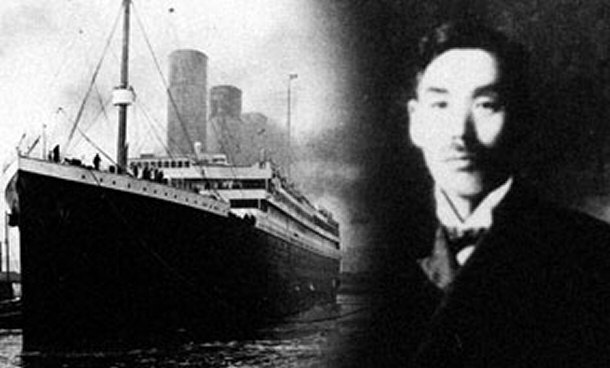The only japanese person aboard the titanic survived the crash and was called a coward in japan for not dying with the other passengers

The Only Japanese Survivor of the Titanic Tragedy: A Misunderstood Story

The sinking of the RMS Titanic is perhaps one of the most famous maritime disasters in history. Amidst the tragic loss of more than 1,500 lives, there was one individual who defied the odds and survived: Masabumi Hosono, a Japanese civil servant. However, his survival stirred mixed reactions in his home country. While some admired his survival instinct, others criticized him, labeling him a coward for not going down with the ship like a true gentleman.
Early Life and Journey on the Titanic
Born on October 17, 1870, in the modern-day Fukui Prefecture of Japan, Masabumi Hosono initially worked for the Japanese Ministry of Transport. In the spring of 1912, Hosono received the rare opportunity to attend the International Hygiene Exhibition in London. Excited and curious about the Western world, he embarked on a journey that would soon take a dramatic turn.
Hosono’s choice of transportation was the grand ocean liner, the RMS Titanic. Boarding the ship at Southampton, England, on April 10, 1912, Hosono found himself amidst the luxury and opulence of the renowned vessel. As a second-class passenger, he occupied Cabin No. 148, paying the equivalent of £26 for his ticket.
The Night of the Tragedy
As the Titanic set sail across the Atlantic Ocean, the voyage appeared to be nothing short of splendid. However, the fortunes of the Titanic quickly changed on the night of April 14, 1912, when the ship struck an iceberg. The collision caused a fatal rupture in the ship’s hull, eventually leading to its demise.
During the ensuing chaos, Hosono managed to find a spot on a lifeboat. While there were strict maritime protocols dictating the order of evacuation, Hosono’s survival can be attributed to a lack of adherence to these guidelines due to the panic and confusion surrounding the disaster. In a twist of fate, he found himself on Lifeboat No. 10, which had a surprisingly low number of occupants compared to its capacity.
The Aftermath and Public Response

Hosono’s survival quickly garnered attention, both internationally and in Japan. Unfortunately, the reaction in his homeland was far from favorable. In a culture that highly valued notions of sacrifice and loyalty, some saw his survival as an act of cowardice. This sentiment was further fueled by the media, as they portrayed Hosono as an individual who had abandoned his moral and societal responsibilities.
The negative attention affected Hosono deeply. When he returned to Japan, he faced discrimination and struggled to find steady work. Peer pressure and public disapproval led him to believe he had done something wrong by surviving while others perished.
A Reevaluation of Hosono’s Story
Despite enduring immense criticism during his lifetime, a reevaluation of Hosono’s story occurred decades after his death in 1939. Historians and researchers began shedding light on the moral complexities of the Titanic tragedy. They highlighted the chaotic nature of the evacuation and acknowledged that Hosono’s survival was not solely a result of individual choice, but rather a consequence of the surrounding circumstances.
Recognizing the unfair treatment Hosono faced, Japan finally started to appreciate his story. In 1960, a newspaper article finally defended his actions, framing his survival as a stroke of luck rather than an act of cowardice. Over time, the perception of Hosono shifted, and the Japanese public began to see him as a survivor rather than a deserter.
Conclusion
Masabumi Hosono’s tale highlights the intricate dynamics of human judgment and the complexity of personal choices during life-threatening events. His survival on the RMS Titanic offers a unique perspective on the tragedy, showcasing the moral dilemma faced by individuals caught in an unforeseeable disaster. Today, Hosono’s story serves as a reminder to approach historical narratives with empathy and understanding, allowing us to learn from past events and challenge our own biases.
Source: Wikipedia - Masabumi Hosono
Related Posts
Quick Links
Legal Stuff

